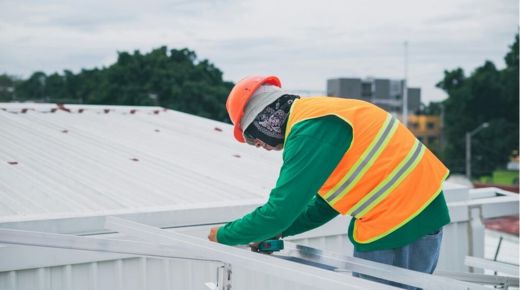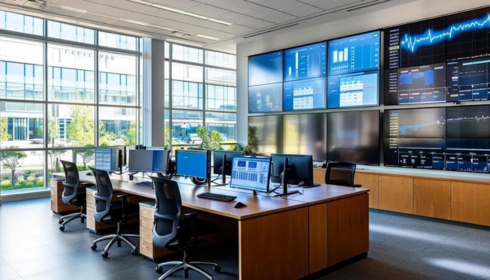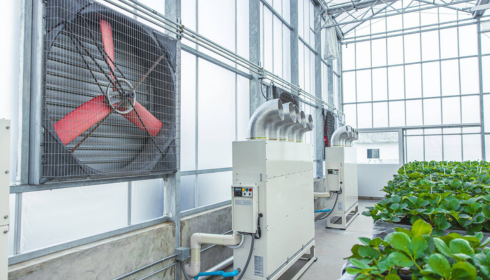
Owning a property comes with its fair share of responsibilities, and maintaining a roof is one of them. Roofs are the first line of defense against nature’s elements, so it’s crucial to keep them in top shape. This article explores common issues that roofs face and provides practical advice on how to prevent these problems. By the end, you’ll have a clear understanding of what to look for and how to act to ensure your roof remains an asset rather than a liability.
Understanding Roof Leaks
One of the most frequent problems homeowners encounter is roof leaks. Leaks can occur due to numerous reasons, such as damaged shingles, cracked flashing, or improper sealing around vents. When water finds its way inside, it can lead to structural damage, mold growth, and increased utility bills. It’s essential to address leaks as soon as they appear to prevent further complications, and consulting a roofing company can be beneficial.
Regular inspections are key to identifying potential leaks before they become significant issues. Look for water stains on ceilings or walls, damp spots in the attic, or visible cracks in the roofing material. Using a flashlight, perform a thorough check after heavy rainfall to spot any signs of moisture. If identified early, minor repairs can be made quickly, saving time and money in the long run.
Dealing with Weather Damage
Weather can wreak havoc on roofs, causing problems like missing shingles, granule loss, or punctures. High winds can lift shingles, while hail can cause direct damage to the surface. Even prolonged exposure to sunlight can degrade the materials over time, leading to brittleness and reduced effectiveness. Understanding how weather impacts roofing can help in taking proactive measures.
Weatherproofing is essential for protecting roofs against the elements. Consider using materials designed to withstand harsh conditions, such as impact-resistant shingles or metal roofing. Additionally, ensure that gutters and downspouts are debris-free to allow proper drainage. Trim overhanging branches that could potentially fall and cause damage during storms. Implementing these strategies can reduce the risk of weather-related roof issues.
Managing Poor Installation and Maintenance
A significant number of roof problems stem from poor installation or inadequate maintenance. Incorrectly installed flashing or misaligned shingles can lead to issues that might not be immediately apparent but can worsen over time. Likewise, a lack of regular maintenance can result in small problems going unnoticed until they require more extensive repairs.
Hiring a reputable roofing company can help avoid these pitfalls. Companies like Atlas Roofing offer professional services that ensure proper installation and ongoing maintenance. They provide a level of expertise that standard DIY approaches can’t match. Regular maintenance checks can catch potential problems early, ensuring the roof remains in good condition throughout its lifespan.
Identifying and Preventing Moss and Algae Growth
Moss and algae growth on roofs is more than just an aesthetic issue; it can also cause damage to the roofing material. Moss retains moisture, which can lead to the deterioration of shingles and create an environment conducive to mold growth. Algae, on the other hand, can leave dark streaks, absorbing heat and increasing cooling costs.
To prevent moss and algae, keep the roof clean and free of debris. Trim nearby trees to reduce shade and allow more sunlight to hit the roof’s surface. Installing zinc or copper strips along the ridge can help inhibit growth, as rainwater carries these elements down the roof, preventing spores from spreading. Regular roof maintenance tips can include cleaning the roof annually to keep it looking and functioning at its best.
Addressing Issues with Ventilation
Proper ventilation is crucial for maintaining a healthy roof and attic environment. Poor ventilation can lead to excessive heat buildup in the summer, causing shingles to warp and deteriorate. In winter, inadequate ventilation can contribute to ice dams, which are dangerous accumulations of ice at the roof’s edge.
Ensure that the attic has sufficient intake and exhaust vents to allow for adequate airflow. This will help regulate temperature and moisture levels, preventing damage to both the roof and the home’s interior. If unsure about the current ventilation system’s effectiveness, consult a professional who can assess and recommend necessary improvements. Investing in proper ventilation is a long-term solution that enhances the roof’s durability.
Understanding the Impact of Trees and Vegetation
While trees and vegetation around a home can create a picturesque setting, they can also pose challenges to roof integrity. Overhanging branches may rub against the roof during windy conditions, leading to scratches or damage to shingles. Falling branches can cause immediate impact damage, and leaves can accumulate on the roof, retaining moisture or clogging gutters.
To mitigate these risks, regularly trim back branches that are too close to the roof and ensure that tree limbs do not hang directly over it. Additionally, clear leaves and debris from the roof and gutters to prevent moisture-related problems. A well-maintained landscape can enhance the durability and appearance of the roof while complementing your home’s aesthetic.
Choosing the Right Roofing Material
Selecting the appropriate roofing material is a critical step in preventing common roof problems. Different materials offer varied levels of durability, energy efficiency, and require specific maintenance practices. Asphalt shingles are a popular choice due to their affordability and ease of installation, while metal roofing offers longevity and excellent weather resistance. Clay tiles provide a classic look along with durability, but they may weigh more than other materials, requiring additional structural support.
When choosing roofing material, consider factors such as climate, budget, and architectural style. Consult a roofing professional to assess your specific needs and recommend the best options. Investing time and resources in selecting the right material will pay off in reduced maintenance needs and increased roof lifespan.
Importance of Professional Inspections
While it’s possible to handle minor roof maintenance tasks independently, there are undeniable benefits to professional roof inspections. Experts possess the knowledge to identify subtle signs of potential issues that the untrained eye might overlook. They can provide recommendations for roof maintenance tips that are specific to the roof type, age, and environmental conditions.
A professional roof inspection typically involves a comprehensive analysis of the roof’s condition, including the structural integrity, materials, and overall performance. Regular inspections can extend the roof’s lifespan and offer peace of mind, knowing that any problems can be addressed proactively. Trusting professionals ensures that the roof remains safe and functional for years to come.
In Conclusion
Maintaining a roof is crucial for property care, requiring vigilance and proactive measures to prevent problems. Roofs face challenges from environmental factors and wear and tear, leading to issues if not addressed promptly. Potential problems include leaks, weather damage, poor installation, moss and algae growth, and ventilation concerns. Leaks can result from damaged shingles, causing interior water damage. Weather effects like heavy rains or high winds can break shingles, while poor installation weakens structural integrity. Moss and algae trap moisture, causing decay, and ventilation issues lead to heat buildup, increasing costs and reducing lifespan.



